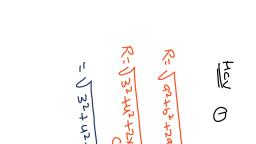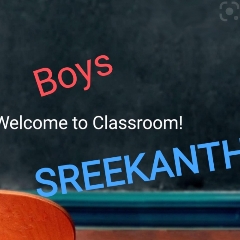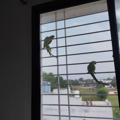Question 1 :
A resistor connected to a battery is heated due to current through it. Which of the following quantity does not vary?<br>
Question 3 :
If the electron in a Hydrogen atom makes $6.25$ <br> $\times$ 10$^{15}$ revolutions in one second, the current is:<br/><br/>
Question 4 :
In the absence of applied potential, its electric current flowing through a metallic wire is zero because
Question 5 :
The amount of charge flowing per second per unit area normal to the flow is called:
Question 7 :
Heat produced in a wire of resistance R due to current flowing at constant potential difference is proportional to
Question 8 :
Which of the following statements is true about the flow of electrons in an electric circuit?
Question 10 :
In a neon gas discharge tube $Ne^+$ ions moving through a cross-section of the tube each second to the right is $2.9 \times 10^{18}$, while $1.2 \times 10^{18}$ electrons move towards left in the same time; the electronic charge being $1.6 \times 10^{-19}\ C,$ the net electric current is
Question 11 :
Through an electrolyte an electric current is due to drift of:
Question 12 :
The unit of physical quantity obtained by the line integral of electric field is?
Question 13 :
If $4 \times 10^{20}eV$ is required to move a charge of $0.25\ C$ between two points, the potential difference between these two points is:
Question 14 :
An electron initially at rest is accelerated through a potential difference of one volt. The energy gained by the electron is:
Question 15 :
Work done in moving an electric charge <i>q </i>in an electric field does not depend upon :
Question 16 :
<span class="wysiwyg-font-size-small"><span class="wysiwyg-font-size-small"></span></span><p class="wysiwyg-text-align-left">A point positive charge of Q' unit is moved round another positive charge of Q unit on a circular path. If the radius of the circle is r, the work done on the charge Q' in making one complete revolution is:</p>
Question 17 :
The potential energy of a proton is $3.2\times 10^{-18}J$ at a particular point. The electric potential at this point is:<div>(Given charge on a proton is $1.6 \times 10^{-19}\ C$)</div>
Question 18 :
A charge is moved from point $A$ to point $B$. The work done to move unit charge during this process, is ______
Question 19 :
<span class="wysiwyg-font-size-small"><span class="wysiwyg-font-size-small"></span></span><p class="wysiwyg-text-align-left">The two surfaces A and B are at the same potential and separated by a distance $r$. The work done in carrying a charged particle ($q$) from A to B will be:</p>
Question 20 :
Two charged conducting spheres of radii $R _ { 1 }$ and $R _ { 2 }$ . separated by a large distance. are connected by a long wire. The ratio of the charges on them is
Question 21 :
<span class="wysiwyg-font-size-small"><span class="wysiwyg-font-size-small"></span></span><p class="wysiwyg-text-align-left">There is 10 units of charge at the centre of a circle of radius 10m. The work done in moving 1 unit of charge around the circle once is:</p>
Question 22 :
If a unit charge is taken from one point to another over an equipotential surface, then :
Question 24 :
The kinetic energy of an electron, which is accelerated in the potential difference of $100\ V$, is
Question 26 :
How much work is done moving an electron from a potential of 2V to 5V?
Question 30 :
The work done is carrying a charge q once round a circle of radius r with a charge q at the center is?
Question 31 :
Assertion: A current flows in a conductor only when there is an electric field within the conductor.
Reason: The drift velocity of electron in presence of electric field decreases.
Question 33 :
A capacitor of $10\ \mu F$ has a potential difference of $40\ volts$ across it. If it is discharged in $0.2\ second,$ the average current during discharge is
Question 34 :
<span class="wysiwyg-font-size-small"><span class="wysiwyg-font-size-small"></span></span><p>The work done (in Joule) in carrying a charge of 100 coulomb between two points having a potential difference of 10 volt is:</p>
Question 35 :
A bullet of mass 2 g is having a charge of 2 $\mu$ C. Through what potential difference must it be accelerated, starting from rest, to acquire a speed of 10 m/s ?  
Question 36 :
A steady current flows in a metallic conductor of a non-uniform cross-section. The quantity/quantities constant along the length of the conductor is/are       <b> </b>
Question 37 :
If the radius of curvature of a copper wire carrying current is doubled, the drift velocity of the electrons will
Question 38 :
Write true or false for the following statements :<br>Positive charge flow from high potential to low potential.
Question 40 :
The current flowing through a wire depends on time as $I=3{ t }^{ 2 }+2t+5$. The charge flowing through the cross-section of the wire in time from $t=0$ to $t=2 s$ is
Question 41 :
A cloud is at a potential of $8\times 10^{9}\ V$ relative to the ground. A charge of $40\ C$ is transferred in a lightning stroke between the cloud and the earth. The energy released is:
Question 42 :
Consider a spherical shell of radius R with a total charge $+$q uniformly spread on its surface(center of the chell lies at the origin $x=0$). Two point charges, $+q$ and $-q$ are brought, one after the other, from far away and placed at $x=-a/2$ and $x=+a/2$ $(a< R)$, respectively. Magnitude of the work done in this process is$?$
Question 43 :
If a charge is moving along the direction of coulomb's force of an electric field,
Question 44 :
Three resistances of magnitude $2, 3$ and $5\ ohm$ are connected in parallel to a battery of $10$ volts and of negligible resistance. The potential difference across 3 resistance will be
Question 45 :
A metal bar of length 1 metre falls from rest under gravity while remaining horizontal with its ends pointing toward magnetic east west. What is the potential difference when it has fallen 10 metres? Horizontal component of earth's field is ${ 1.7\times 10 }^{ -5 }$ Tesla
Question 46 :
Heat flows radially outward through a spherical shell of outside radius $R_{2}$ and inner radius $R_{1}$. The temperature of inner surface is $\Theta _{1}$ and that outer is $\Theta _{2}$. At what radial distance fro m center of shell the temperature is just half way between $\Theta _{1}$ and $\Theta _{2}$
Question 47 :
The displacement of charge $q$ in the electric field $\vec E = e_1\hat i + e_2 \hat j + e_3 \hat j$ is$\vec r = a \hat i + b \hat j$. The work done is
Question 48 :
Given that $E = ((3x^2<br><br> + y) \hat i + x \hat y) kV/m$, find the work done in moving a $- 2 \mu C$ charge from $(0, 5, 0)$ to $(2, -1 , 0)$ by taking the path :<br>$y=5-3x$
Question 49 :
A parallel plate condenser has conducting plates of radius $12cm$ seperated by a distance of $5mm$. It is charged with a constant charging current of $0.16A$. the rate at which the potential difference between the plates change is:
Question 50 :
Assertion: STATEMENT-1 : The current density $\vec{J}$ at any point in ohmic resistor is in direction of electric field $\vec{E}$ at that point.
Reason: STATEMENT-2 : A point charge when released from rest in a region having only electrostatic field always moves along electric lines of force.

















































